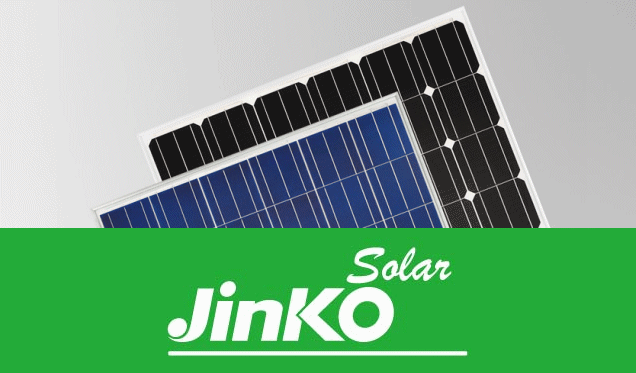The conversion efficiency for P-type mc-Si PERC cells has exceeded the 22% mark for the first time – and the technology will be integrated into JinkoSolar’s production lines.
The company announced it achieved conversion efficiency of 22.04% for “practical sized” P-type multi-crystalline silicon solar cells, which has been verified by Fraunhofer ISE Germany.
JinkoSolar says advanced texturing, passivation and anti-light-induced degradation (anti-LID) technologies were integrated into the passivated emitter rear contact (PERC) structure to achieve the new world record; the second time the company has set a new conversion efficiency record since October last year.
“The entire manufacturing chain is comprised of low-cost industrial processes and will be gradually transferred into mass production,” said Dr. Jin Hao , Vice President of JinkoSolar .
P-Type solar cells are the most common type used in solar panels for residential, commercial and utility applications. The other form, N-Type, are used in some high-end panels. SQ blogger Ronald explains the difference between P-Type and N-Type solar cells here. If the term ‘PERC’ has you baffled, check out Ronald’s article on PERC solar panels here.
In other recent news from JinkoSolar, the company states it was named the most “bankable” solar panel manufacturer among 52 module brands by Bloomberg New Energy Finance (BNEF). The results are based on a survey by BNEF of key PV stakeholders.
“The result of this survey confirms that JinkoSolar is the most preferred brand by banks, the top brand that industry players are most willing to use in their projects, and also the top brand that source of finances are most willing to fund,” said Kangping Chen, CEO of JinkoSolar.
JinkoSolar also recently announced it supplied 28.2 MW dc of its 1500- volt monocrystalline PERC modules to Swinerton Renewable Energy. Swinerton used the 80,0000 solar panels in construction of the Jacumba Solar Project in San Diego County, California; which was commissioned in August.
It’s been another busy year for JinkoSolar, with 4.9GW of modules delivered in the first half of 2017. As at June 30, the company had an integrated annual capacity of 6.0 GW for silicon ingots and wafers, 4.5 GW for solar cells, and 7.5 GW for solar panels. JinkoSolar has 15,000 employees and 8 production facilities, 5 of which are in China.
You can read Australian customer reviews of JinkoSolar panels here.


 RSS - Posts
RSS - Posts



any feedbacks on Seraphim poly panels folks? &
Solax phase 2 MPPT Grid connect inverter?
Hi Amy
Seraphim produce reliable, tier one, panels with a 10 year product warranty. I wrote about them here:
https://www.solarquotes.com.au/blog/seraphim-solar-panel-review-heaven-hell/
Solax is a reputable producer of inverters. Their inverters aren’t what I would refer to as high end or premium products, but hopefully will provide good value for money.